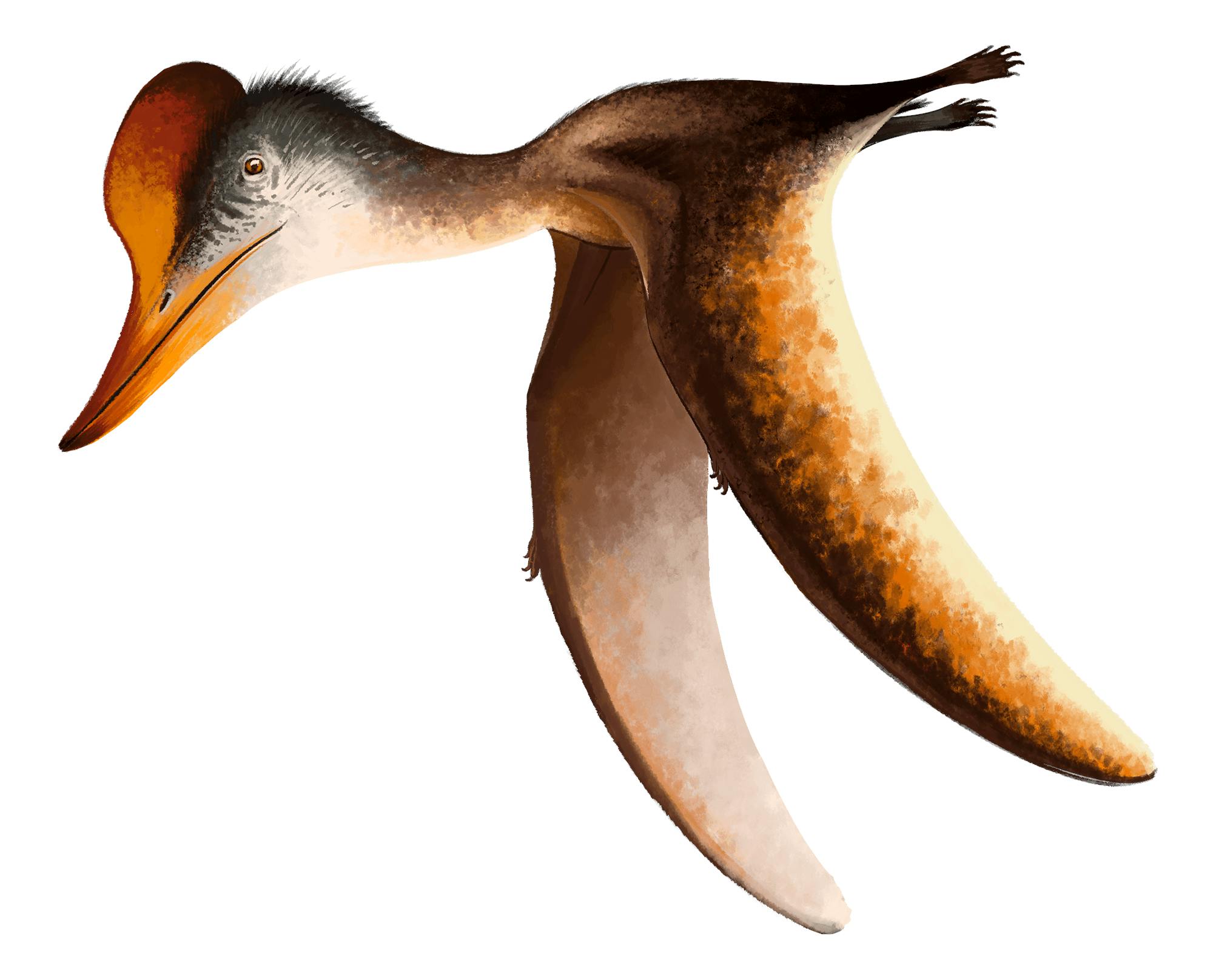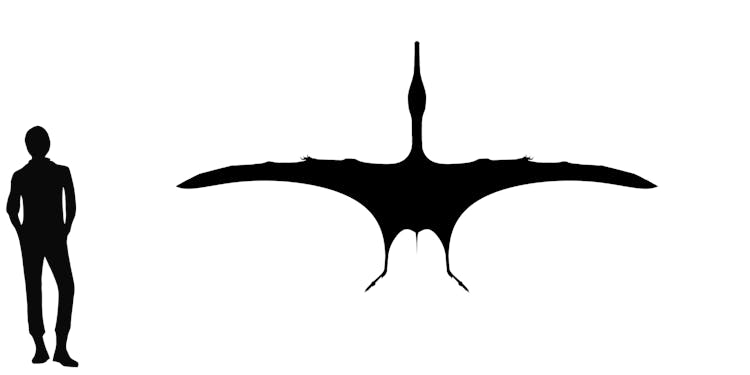


In 1996 Jerald Harris and Kenneth Carpenter named Kepodactylus insperatus, a new pterosaur discovered in the Upper Jurassic Morrison Formation near Garden Park, Colorado. The genus name translates to “garden finger,” an allusion to Garden Park. The species name translates to “unexpected,” referencing the rarity of pterosaurs in the Morrison Formation.
Kepodactylus is known from a single incomplete specimen, preserving a single cervical vertebra, the left humerus, some wing finger bones, and one metatarsal. The cervical vertebra is crushed and is missing its neural spine, but appears to be broadly similar to what’s seen in Pterodactylus.
The humerus is almost complete, but crushed and damaged near the elbow. The deltopectoral crest is prominent and close to the shoulder joint. Harris and Carpenter note several ways in which the deltopectoral crest in Kepodactylus differs from other pterosaur taxa. They estimate its wingspan to be 2.5 m (8 feet), making it one of the largest Jurassic pterosaurs.
Harris and Carpenter didn’t assign Kepodactylus to any pterosaur family, noting that it was a short-tailed pterodactyloid and was not a pteranodontid, nyctosaurid, or azhdarchid based on differences with the humerus and cervical vertebrae.
In 2003 David Unwin assigned Kepodactylus to the Dsungaripteroidea without much discussion. In Unwin’s phylogeny, dsundaripteroids include the dsungaripterids as well as several other taxa including Germanodactylus. Dsungaripteroids are characterized by toothless jaw tips, stout cheek teeth, and thick-walled bones. At Pteros, we have reconstructed Kepodactylus using Germanodactylus as a model.
When Kepodactylus was alive, about 150 million years ago, the Morrison Formation was being formed by floodplains and broad meandering rivers. It is famous for its dinosaurs like Brontosaurus, Stegosaurus, and Allosaurus. The only known specimen of Kepodactylus was actually found next to a virtually complete Stegosaurus.
